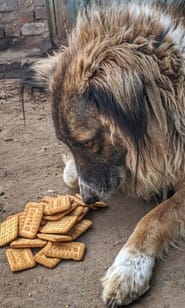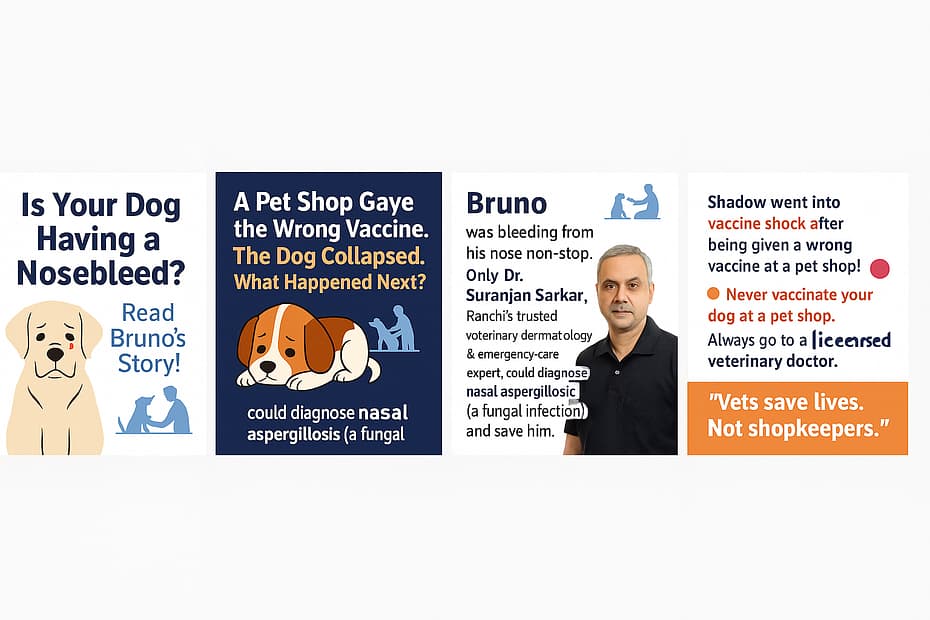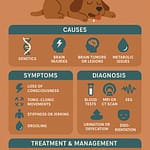Introduction: When Your Dog Has a Nosebleed
It’s a pet parent’s nightmare — seeing blood trickling from your dog’s nose. This condition, called epistaxis, isn’t just frightening — it could signal a serious underlying issue. While nosebleeds are relatively rare in dogs, they demand urgent veterinary attention. In the heart of Ranchi, Dr. Suranjan Sarkar, a leading veterinary dermatologist and critical care expert, has successfully treated multiple complicated cases of epistaxis, often where others could not.
🔍 What Is Epistaxis?
Epistaxis refers to bleeding from the nasal passages and can occur from one or both nostrils. In dogs, this can range from a few drops to a steady stream and may be intermittent or continuous.
⚠️ Common Causes of Epistaxis in Dogs
- Trauma – from fights, accidents, or foreign objects like grass seeds.
- Infections – bacterial, fungal (aspergillosis), or parasitic.
- Tumors – nasal polyps or cancers.
- Bleeding Disorders – like thrombocytopenia, or exposure to rat poison (anticoagulants).
- High Blood Pressure – often related to kidney or heart disease.
- Dental Disease – advanced tooth or gum infections spreading to the sinus.
🐶 A Real Crisis: Case of Bruno the Labrador
In early 2024, a 6-year-old Labrador named Bruno was brought to Pluto Pet Clinic, Ranchi. His owners were panicked — Bruno had been bleeding from his left nostril for two days, and the bleeding worsened at night. The local clinics had tried antibiotics and nasal sprays, but nothing worked.
🩺 Enter Dr. Suranjan Sarkar: Diagnostic Precision
Dr. Sarkar, known for combining dermatological insight with emergency care, took a systematic approach:
- History & Physical Exam: Bruno had no trauma or fever — but mild lethargy and pale gums.
- Bloodwork: Platelet count was slightly low. No signs of rat poison toxicity.
- Imaging: X-rays of the skull and nasal passages suggested a fungal infection.
- Nasal Endoscopy: Using advanced diagnostic tools, Dr. Sarkar found mucosal inflammation with crusty fungal plaques — likely nasal aspergillosis.
💉 Treatment Strategy
- Antifungal Therapy – Topical clotrimazole infusion via nasal catheter, done under anesthesia.
- Anti-inflammatory Medication – To reduce mucosal swelling.
- Antibiotics – To prevent secondary infections.
- Nutritional Support – Vitamin K1 and iron supplements for mild anemia.
- Follow-up care – 3 cycles of antifungal treatment over 3 weeks.
✅ Outcome: Bruno Recovered Fully
Bruno’s nosebleed subsided completely after the second cycle. By the fourth week, he was active, playful, and eating well. His family couldn’t thank Dr. Sarkar enough — and shared their story publicly to raise awareness about early veterinary intervention.
💬 Dr. Sarkar’s Words
“In cases of epistaxis, delay can be fatal, especially if it masks a tumor, bleeding disorder, or deep fungal infection. Dogs are tough, but the earlier we treat, the better the outcome.”
🧠 Takeaways for Pet Owners
- Don’t Ignore Nosebleeds – Even a small bleed could mean something serious.
- Avoid Home Remedies – Using nasal drops or oils without diagnosis can worsen the issue.
- Seek Experts – Doctors like Dr. Sarkar, with special training in critical care and dermatology, can spot hidden causes quickly.
- Prevent Access to Poisons – Many cases stem from rodenticides or toxic plants.
📍 Where to Get Help
Pluto Pet Clinic (Trinity Pet Hospital)
Dr. Suranjan Sarkar, BVSc, PGD-CCM
📍 Hinoo Main Road, Ranchi
📞 +91-94308 14882
🌐 plutopetclinics.com
❤️ Final Words
Epistaxis may be uncommon, but in dogs like Bruno, it can quickly turn life-threatening. Thanks to the expertise of veterinarians like Dr. Suranjan Sarkar, pets in Ranchi now have access to world-class critical care and advanced diagnostics — giving them a second chance at life.

Dr. Suranjan Sarkar is a veterinarian and also a writer and editor for both print and digital with a love for travel, animal, and architecture. Much of his writing has focused on human and animal health and welfare. A life-long pet owner, His two favorite canine quotes are, “Be the kind of person your dog thinks you are,” and “Dogs communicate their feelings honestly and directly. There’s no hidden agenda or manipulation.”










